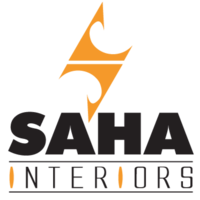Best Kitchen Cabinet Materials [2025]: Plywood, HDHMR, MDF & More Compared
The kitchen is often called the heart of the home, and for good reason! It’s where meals are made, families gather, and memories are created. When planning a new or renovated kitchen, especially a modular one, selecting the right kitchen cabinet materials is crucial. With so many modular kitchen materials available, making the right choice can feel overwhelming. You need materials that not only look great but also withstand the daily demands of cooking, moisture, and regular use.
This blog guide dives into the various materials used for kitchen cabinets, helping you understand their properties so you can select the best material for your kitchen cabinets.
Why Choosing the Right Kitchen Cabinet Material Matters
Your kitchen cabinets form the backbone of your kitchen’s design and functionality. The material used in modular kitchen construction directly impacts:
- Durability & Lifespan: How long will your kitchen last and look good?
- Functionality: Can the material support heavy loads and frequent use, especially regarding hardware like hinges and channels?
- Resistance: How well does it handle moisture, spills, and potential pests like termites? This is where waterproof material for kitchen cabinets becomes a key consideration.
- Maintenance: Is it to clean and maintain?
- Aesthetics: Does the material allow for the desired finish and look?
Investing time in understanding your kitchen cabinet material options ensures you build a kitchen that serves you well for years to come.
Exploring Core Materials for Modular Kitchens
Let’s break down the most common core materials used in modular kitchens today. This modular kitchen materials list covers the options you’ll likely encounter:
- MFC (Melamine Faced Chipboard) / Particle Board
- MDF (Medium Density Fiberboard)
- Plywood (MR & BWP Grades)
- WPC (Wood Polymer Composite)
- HDHMR (High-Density High Moisture Resistant Fiberboard)
Each of these types of kitchen cabinet materials comes with its own set of advantages and disadvantages.
Detailed Review of Modular Kitchen Material Options
1. MFC (Melamine Faced Chipboard) / Particle Board – The Cost Saver

Made from wood chips pressed together with resin, MFC is often a budget-friendly starting point.
- Pros: Cost-effective, versatile for finishes like laminates, suitable for dry areas or temporary solutions.
- Cons: Low strength and screw-holding capacity (not ideal for heavy accessories or frequent use), very prone to moisture damage and fungus, low termite resistance unless specifically (and expensively) treated.
- Lifespan: Typically 4-5 years, maybe up to 8-10 if high-density.
💡 Use MFC for highlight panels, budget-friendly designs, or short-term kitchens.
2. MDF (Medium Density Fiberboard) – Budget-Friendly and Smooth

MDF is an engineered wood made from wood fibers bonded with resin under heat and pressure, resulting in a denser board than MFC.
- Pros: Smoother surface than MFC (great for painting), decent strength (better than MFC), good versatility for finishes (paint, laminates), generally cost-effective.
- Cons: Highly susceptible to moisture damage (experiments show significant weakening and peeling when wet), screw-holding capacity is only decent.
- Lifespan: Around 7-8 years if well-made and kept dry.
💡 Choose MDF for decorative elements like carved panels and painted shutters.
3. Plywood (MR & BWP Grades) – The Most Trusted Choice for Kitchens

Plywood is a very popular choice, made from thin sheets of wood veneer glued together. It’s known for its strength.
- Pros: High strength and excellent screw-holding capacity (ideal for hardware and heavy loads), potentially very long lifespan (10-12 years for standard, up to 20+ for quality treated brands), good termite resistance (usually treated), BWP (Boiling Waterproof) grade offers excellent water resistance. This is often considered the best wood material for kitchen cabinets.
- Cons: MR (Moisture Resistant) grade isn’t suitable for very wet areas, is less versatile for painting due to natural wood grain/minor imperfections showing through, and can be more expensive than MDF/MFC.
- Water Resistance Note: BWP Plywood stands up exceptionally well to water, making it a prime candidate if you’re seeking waterproof material for kitchen cabinets. Experiments showed it handled 30 days of submersion without damage. MR Plywood showed only slight bulging.
💡 Best for base units, heavy-use drawers, and any area that requires load-bearing strength.
4. WPC (Wood Polymer Composite) – Ultimate Termite Resistance

WPC blends wood fibers/flour with plastics.
- Pros: Excellent water resistance, practically termite-proof (a huge advantage in termite-prone regions like modular kitchen materials India often requires), and becoming popular for its resilience.
- Cons: Very low screw-holding capacity in standard variants (channels and accessories can loosen over time), difficult to paint, applying laminates/acrylics can be costly. Higher-grade WPC with better screw-holding exists but is significantly more expensive.
- Note: While sometimes discussed alongside PVC material for kitchen cabinets, WPC is a distinct composite.
💡 Recommended for termite-prone homes or very wet zones, but avoid for load-heavy units.
5. HDHMR (High-Density High Moisture Resistant Fiberboard) – A Rising Star

Often considered an upgrade from MDF, HDHMR is an engineered wood made with hardwood particle board combined using a unique resin, pressed to form a dense board. It’s a strong contender for the latest material for kitchen cabinet solutions.
- Pros: Combines the strength approaching Plywood with the smooth finish of MDF, excellent moisture resistance (ideal for kitchens), good termite resistance (often treated), great screw-holding capacity (close to Plywood), highly versatile for finishes (laminates, acrylics, paint).
- Cons: It can be more expensive than MDF or MFC, though often seen as good value for its properties.
- Performance: Water resistance tests showed HDHMR performed exceptionally well, remaining sturdy with no peeling after 30 days underwater.
💡 Perfect for homeowners wanting aesthetics with durability, without plywood’s price tag.
Key Factors When Selecting Your Material
Beyond the individual material types, remember these crucial factors:
- Water Resistance: Kitchens are wet zones! Sinks, cooking steam, spills – moisture is unavoidable. Materials like BWP Plywood, HDHMR, and WPC offer the best protection. MDF is particularly vulnerable here.
- Durability & Strength (Screw Holding): Essential for cabinets holding heavy pots, pans, and groceries and for ensuring hinges and drawer channels function smoothly for years. Plywood and HDHMR excel here.
- Termite Resistance: Depending on your location (a significant factor for modular kitchen materials near me searches in many areas), termite resistance (inherent in WPC or through treatment in Plywood/HDHMR) is non-negotiable.
- Versatility & Finishes: Do you want a high-gloss acrylic finish, a specific paint color, or a textured laminate? MDF and HDHMR offer smooth surfaces that are ideal for varied finishes, while Plywood works best with laminates or veneers.
- Budget: Modular kitchen materials’ price varies significantly. Balance your desired longevity and features against your budget. MFC and MDF are generally cheaper, while quality Plywood, HDHMR, and WPC tend to have a higher kitchen cabinet material price.
Beyond the Core: Surfacing Materials and Hardware
Remember, the core material is just the structure. The final look and added protection come from surfacing materials like:
- Laminates: Cost-effective, durable, and wide variety of colors and textures.
- Acrylic: High-gloss, premium look, reflective surface.
- Paint/PU: Offers endless color possibilities and requires a smooth base like MDF or HDHMR.
- Veneer: Thin layer of real wood for a natural look.
Additionally, don’t skimp on hardware! Quality hinges and telescopic channels ensure smooth operation and longevity, especially when paired with a core material that has good screw-holding capacity.
Which Material is Best for Your Modular Kitchen?
So, which material is best for modular kitchen cabinets? There’s no single universal answer. The best material for modular kitchen cabinets depends on your priorities:
- For Budget-Conscious, Dry Areas: MFC or MDF might suffice, but be wary of moisture.
- For Durability & Strength: Plywood (especially BWP) and HDHMR are top choices.
- For Maximum Water & Termite Resistance, BWP Plywood, HDHMR, and WPC lead the pack (though consider WPC’s screw-holding limitations).
- For Painted Finishes: MDF and HDHMR provide the smoothest surfaces.
- Overall Balanced Choice: HDHMR offers a great mix of strength, water resistance, smooth finish versatility, and good screw holding, making it an excellent all-around option for many modern kitchen cabinet material needs. BWP Plywood is also a highly reliable and durable choice, particularly for wet areas.
Choosing your modular kitchen-making materials is a significant decision. By understanding the properties, strengths, and weaknesses of each option from MFC to HDHMR you can make an informed choice that balances cost, durability, water resistance, and the aesthetic you desire for your dream kitchen. Consider your climate, budget, and how you use your kitchen to select the kitchen cabinet-building materials that will serve you best for years to come.
SAHA Interiors has been serving Chennai homes since 2010, specializing in modular kitchens, wardrobes, and custom furniture solutions. Our designs blend functionality with aesthetics to create spaces in which Chennai families love to live.

